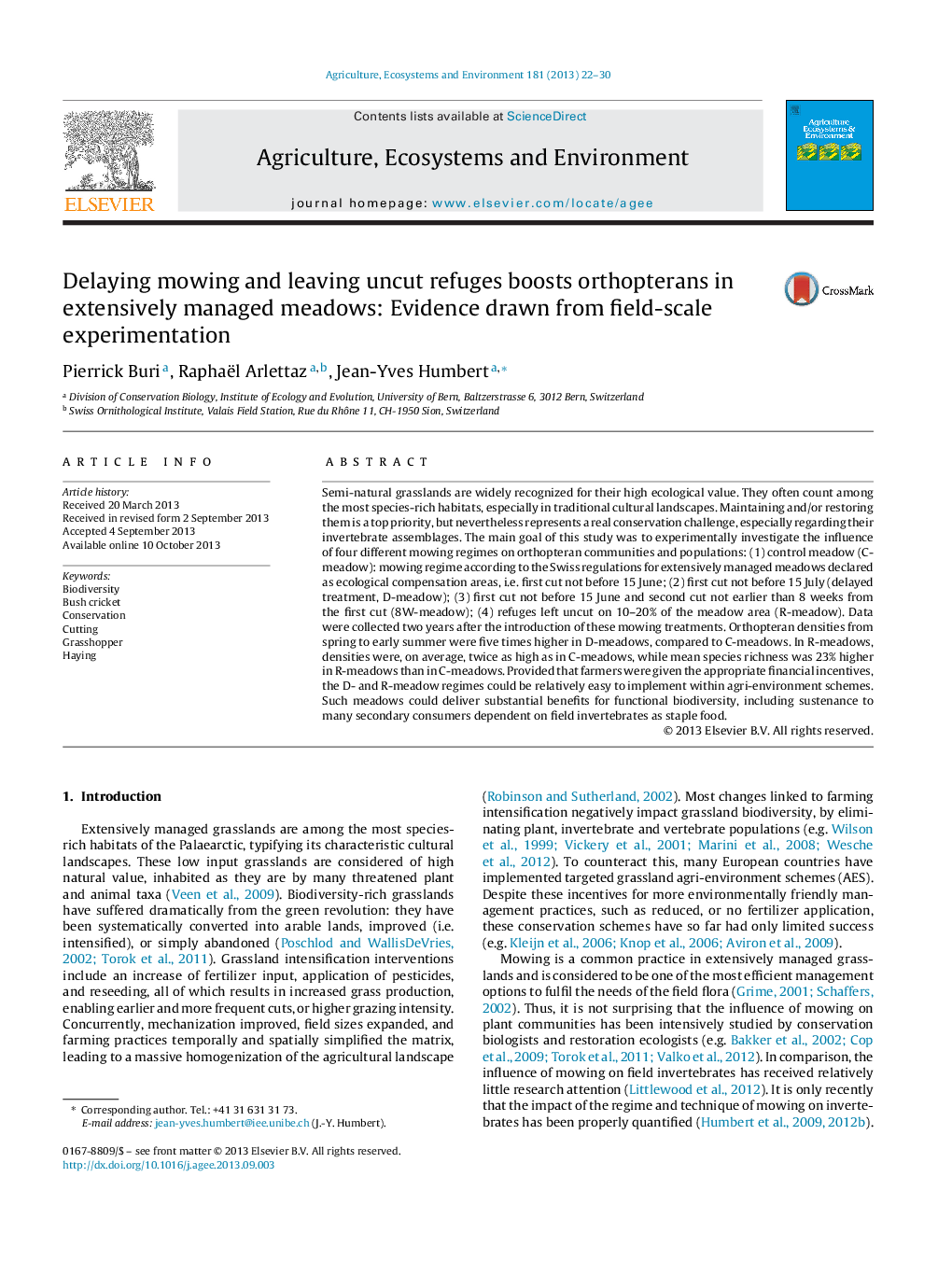| کد مقاله | کد نشریه | سال انتشار | مقاله انگلیسی | نسخه تمام متن |
|---|---|---|---|---|
| 2414131 | 1552071 | 2013 | 9 صفحه PDF | دانلود رایگان |

• Grassland conservation; responses of orthopterans to four different mowing regimes.
• Delaying the first mowing date from 15 June to 15 July benefits orthopteran abundance.
• Leaving uncut grass refuge when mowing benefits orthopteran abundance and diversity.
• Positive effects detected after two years of alternative mowing management.
Semi-natural grasslands are widely recognized for their high ecological value. They often count among the most species-rich habitats, especially in traditional cultural landscapes. Maintaining and/or restoring them is a top priority, but nevertheless represents a real conservation challenge, especially regarding their invertebrate assemblages. The main goal of this study was to experimentally investigate the influence of four different mowing regimes on orthopteran communities and populations: (1) control meadow (C-meadow): mowing regime according to the Swiss regulations for extensively managed meadows declared as ecological compensation areas, i.e. first cut not before 15 June; (2) first cut not before 15 July (delayed treatment, D-meadow); (3) first cut not before 15 June and second cut not earlier than 8 weeks from the first cut (8W-meadow); (4) refuges left uncut on 10–20% of the meadow area (R-meadow). Data were collected two years after the introduction of these mowing treatments. Orthopteran densities from spring to early summer were five times higher in D-meadows, compared to C-meadows. In R-meadows, densities were, on average, twice as high as in C-meadows, while mean species richness was 23% higher in R-meadows than in C-meadows. Provided that farmers were given the appropriate financial incentives, the D- and R-meadow regimes could be relatively easy to implement within agri-environment schemes. Such meadows could deliver substantial benefits for functional biodiversity, including sustenance to many secondary consumers dependent on field invertebrates as staple food.
Journal: Agriculture, Ecosystems & Environment - Volume 181, 1 December 2013, Pages 22–30